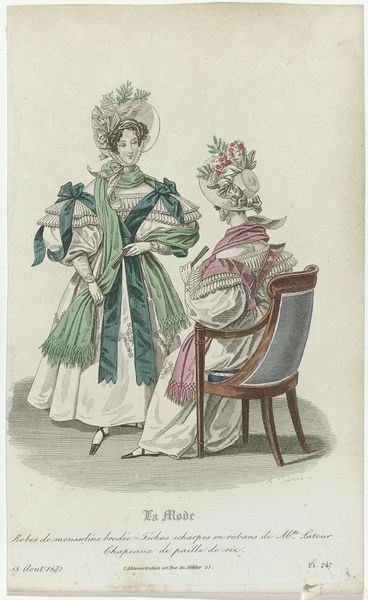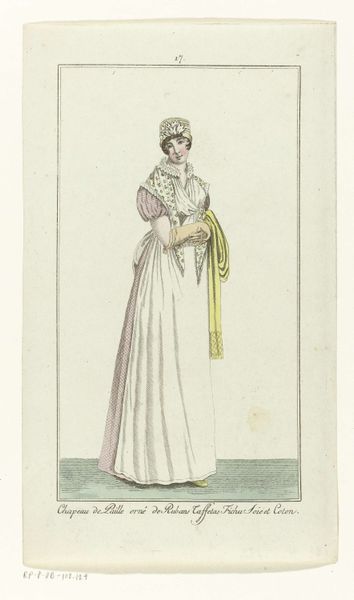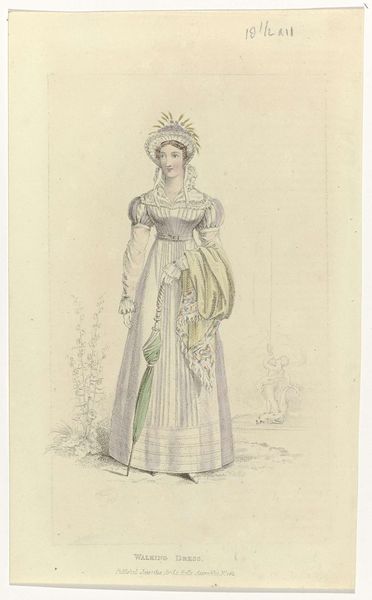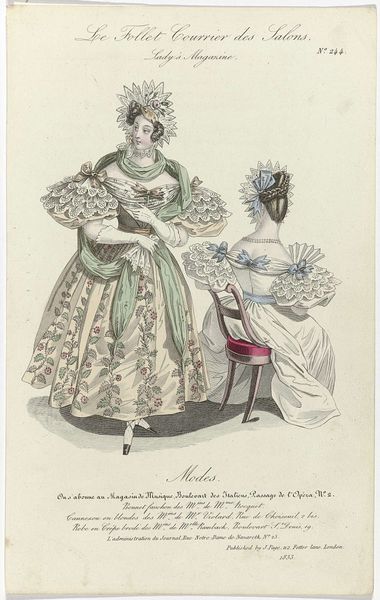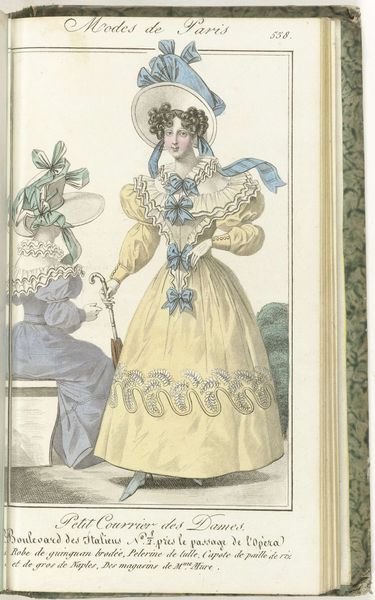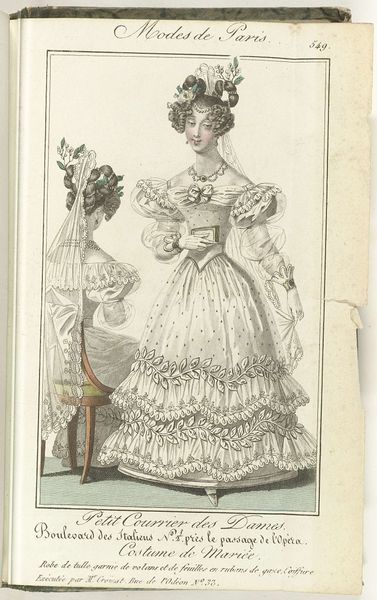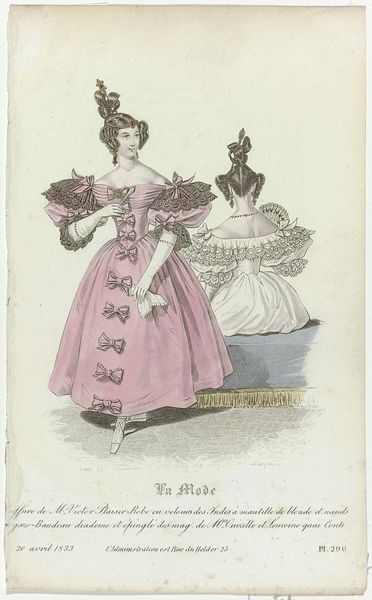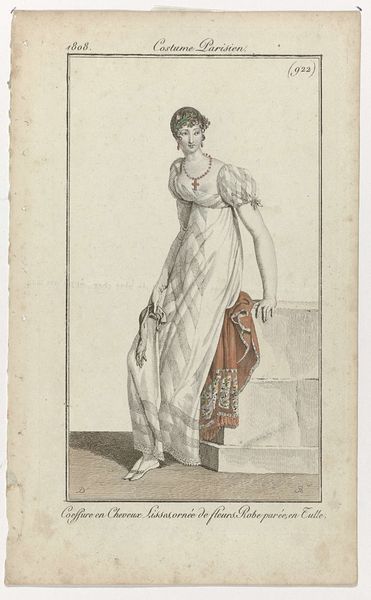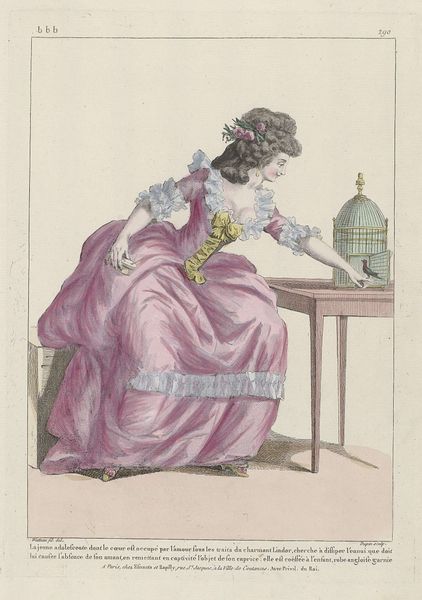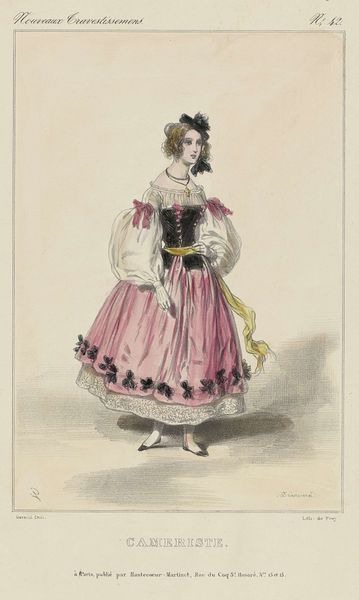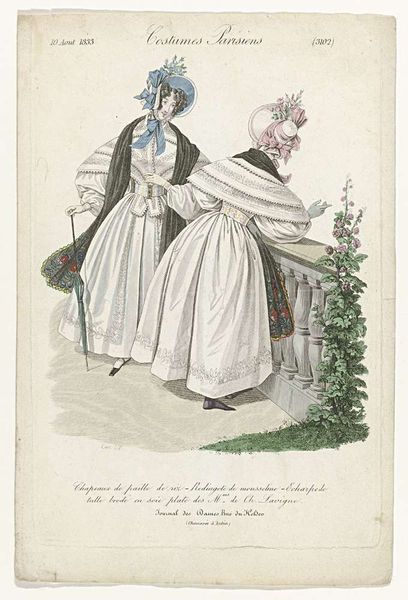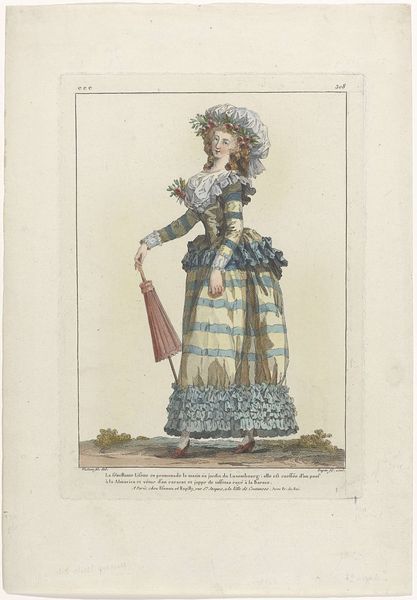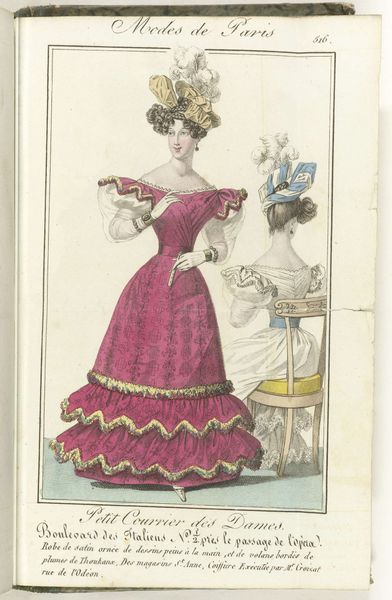
drawing, print, etching
#
portrait
#
drawing
# print
#
etching
#
genre-painting
#
dress
Dimensions: height 209 mm, width 136 mm
Copyright: Rijks Museum: Open Domain
Curator: Before us is an 1832 etching titled "Jonge vrouw in huiskleding" or "Young woman in house clothes." The artist is Elisabeth Barbara Schmetterling, and the artwork showcases a woman in what was then considered appropriate indoor attire. What are your first thoughts? Editor: My initial reaction is one of surprise at the complexity. 'House clothes' suggest comfort, but this outfit, with its lace bonnet and elaborate sleeves, appears rather restrictive, pointing perhaps to societal expectations around women's appearance even in private. Curator: That's a perceptive observation. Notice how the etching technique emphasizes delicate textures – the frills of the underdress, the ornate design of the shawl. These are not mere decorations. The layers denote status, connecting the wearer to a web of visual and societal symbolism. Editor: And the hint of a red shawl draped over the ornate table contrasts sharply with the almost subdued lilac of her dress. This could represent a quiet defiance or the potential for passion held in check. Do you feel this type of house-dress denotes how women are viewed in domestic spheres, how are they depicted in terms of labor or other expected work? Curator: An interesting interpretation. As well as the vibrant shawl and how the artist has included such symbols, don't miss how this artwork embodies a transition within the history of visual semiotics and cultural memory. The imagery, including what might be deemed appropriate domestic attire and their relation to an audience. Consider also that we see genre painting here. We may need to address historical contexts relating to issues around gender identity at that time Editor: Exactly! I feel like considering the broader historical landscape when thinking about this work enhances its message so thoroughly, it gives the piece meaning Curator: I appreciate how contextualising it with current affairs enables the meaning to stretch over a long-term timeframe and into modern conversation. Thank you. Editor: Thanks, It really shows how art history combined with historical thought brings greater understandings to what the artist might mean by this representation.
Comments
No comments
Be the first to comment and join the conversation on the ultimate creative platform.
